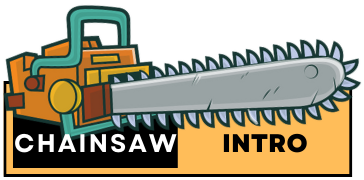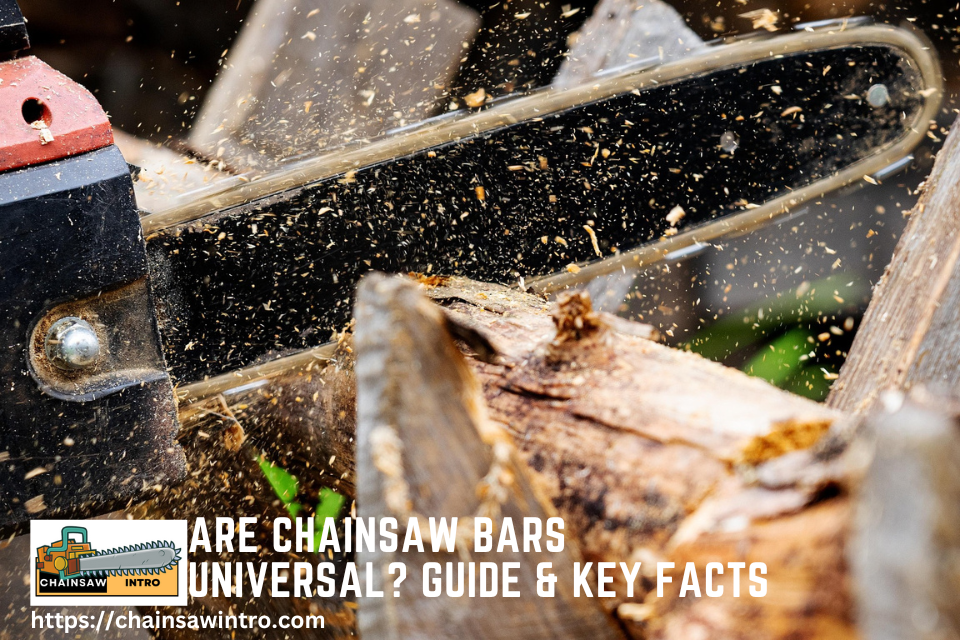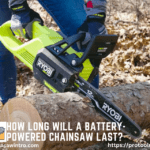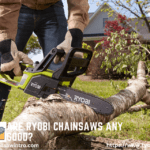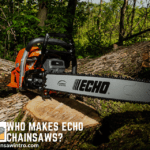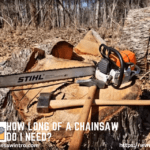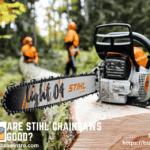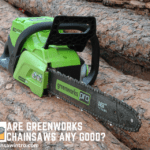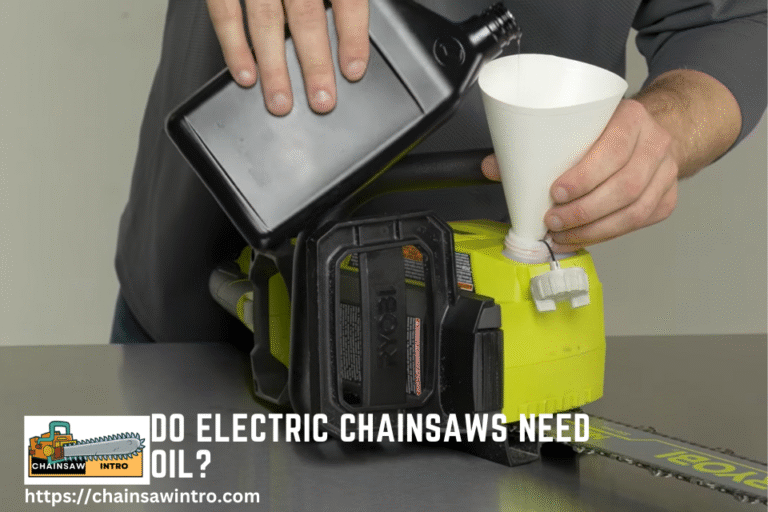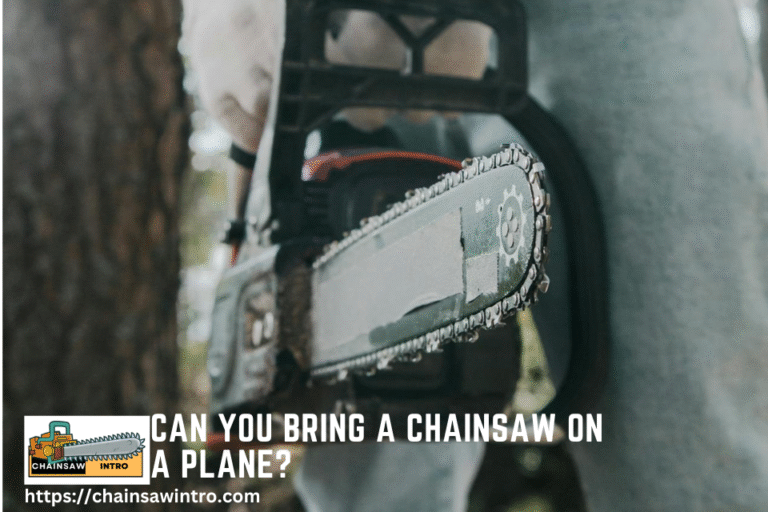Chainsaws are powerful tools designed for efficiency, but they are also complex machines made up of multiple parts that need to work together perfectly. One of the most essential components is the chainsaw bar—the long metal guide that holds and directs the chain as it cuts. Over time, chainsaw bars wear out, get bent, or may need to be swapped for a different length to suit particular jobs. When this happens, many chainsaw users wonder: are chainsaw bars universal?
This question might seem simple, but the answer is a little more complex. Chainsaw bars are not truly universal. Compatibility depends on factors such as bar length, chain pitch, gauge, and the mount design specific to each brand and model. In this article, we’ll dive into the details, break down the factors that affect chainsaw bar interchangeability, and give you practical advice to choose the right replacement bar for your chainsaw.
Understanding the Chainsaw Bar
Before diving into compatibility, it’s important to understand what a chainsaw bar is and what role it plays. The chainsaw bar, also known as the guide bar, is the long metal arm that the chain rotates around. It guides the chain during cutting and absorbs much of the mechanical stress during operation. Chainsaw bars come in various lengths, widths, and designs, each tailored to specific cutting tasks and chainsaw models.
Why Chainsaw Bars Are Not Universal?
Unlike some standardized parts in other tools, chainsaw bars are highly specific. The main reason bars are not universal is because different chainsaw models and brands use unique configurations for their chains, engines, and mounting systems.
For example:
- A 16-inch bar from one brand may not fit another brand’s chainsaw because the mounting slot and tensioning hole are designed differently.
- Even within the same brand, different chainsaw models often require different bars due to engine size, chain compatibility, or oiling system variations.
This means that when shopping for a replacement or upgrade, you can’t just pick any bar that looks similar. Instead, you need to check compatibility specifications carefully.
Key Factors That Determine Chainsaw Bar Compatibility
If chainsaw bars aren’t universal, what exactly makes them different? Here are the most important factors you should consider:
1. Chainsaw Make and Model
Each chainsaw brand—Stihl, Husqvarna, Echo, Makita, etc.—designs its tools with proprietary specifications. These include unique bar mounts, oiling systems, and tensioning mechanisms. Even within the same brand, different models may require different bar types. Always consult your chainsaw’s manual or manufacturer’s website to determine compatible bar options
2. Bar Length
Bar length is one of the first things people notice. It determines how deep your saw can cut. Common lengths range from 12 inches for small electric saws to 36 inches or more for professional logging saws.
- A chainsaw must have enough engine power to support a longer bar. Using a bar that’s too long for your engine can strain the motor and make cutting inefficient.
- Similarly, installing a bar shorter than recommended may reduce cutting efficiency and balance.
3. Mount Type
The bar mount refers to the configuration of the holes and slots where the bar attaches to the chainsaw. These include:
- Mounting slot: Where the bar slides onto the chainsaw’s studs.
- Tensioning hole: Allows for chain tension adjustment.
- Oil holes: Enable lubrication of the chain during operation.
If these components don’t align perfectly with your chainsaw, the bar won’t fit properly.
For example:
- Stihl, Husqvarna, and Echo all use different bar mounts.
- Even within the same brand, there may be multiple mount types for different chainsaw series.
This is one of the biggest reasons chainsaw bars are not universal.
4. Chain Pitch
The pitch is the distance between three consecutive rivets divided by two, while the gauge is the thickness of the drive links. Your chainsaw bar must match the pitch and gauge of the chain and sprocket. Using mismatched components can result in chain derailment, excessive vibration, and damage to the saw.
Common pitch sizes include 0.325″, 3/8″, and 0.404″, while gauge sizes typically range from 0.043″ to 0.063″. Always verify these measurements before purchasing a replacement bar.
The bar’s sprocket nose must match the chain pitch. If the bar pitch doesn’t match your chain, the saw will not operate safely or effectively.
5. Chain Gauge
Gauge refers to the thickness of the drive links that fit into the bar’s groove. Standard gauges include .043″, .050″, .058″, and .063″.
If the gauge of your chain is too thin or thick for the bar groove, it won’t fit properly. This mismatch can cause the chain to derail or wear out prematurely.
6. Oil Hole Alignment
Chainsaws automatically lubricate the bar and chain through oil holes. If the oil hole on the bar doesn’t align with the oil port on the saw, lubrication will fail, leading to overheating and wear.
7. Tensioner Hole Placement
Chainsaws use a small pin or bolt to adjust chain tension. If the tensioner hole on the replacement bar doesn’t line up correctly, you won’t be able to tighten the chain properly.
Universal vs. Specialized Chainsaw Bars
Chainsaw bars fall into two broad categories: universal and specialized.
Universal Chainsaw Bars
These bars are designed to fit a variety of chainsaw models, typically within the same brand or across similar mounting patterns. They are often made from durable steel and feature a basic design suitable for light-duty tasks. Universal bars are ideal for homeowners and casual users who need a quick replacement without high-performance demands.
However, universal bars may lack advanced features such as oil ramps, vibration dampening, and reinforced tips. They may also require minor modifications to fit certain models, and performance may not match that of a specialized bar.
Specialized Chainsaw Bars
Specialized bars are engineered for specific chainsaw models and tasks. They often include features like:
- Replaceable sprocket noses
- Oil jets and grooves
- Anti-vibration technology
- High-grade materials like aluminum or alloy steel
These bars offer superior performance, durability, and safety, making them ideal for professional use. While they cost more than universal bars, the investment pays off in efficiency and longevity
Are Bars Interchangeable Between Brands?
Generally, chainsaw bars are not interchangeable between different brands. However, there are a few exceptions.
- Third-Party Manufacturers: Companies like Oregon produce replacement bars designed to fit multiple brands and models. They create bars with standardized mounts that work across a wide range of chainsaws.
- Adapters and Conversion Kits: In rare cases, adapters may allow a bar from one brand to fit another, but this is not recommended for safety reasons.
Even with third-party options, you must check specifications carefully to ensure compatibility.

Can You Put a Longer Bar on Your Chainsaw?
Many chainsaw owners wonder if they can upgrade to a longer bar to cut larger trees. While this is possible in some cases, it comes with limitations:
- Your engine size must be powerful enough to handle the added resistance. For example, a 35cc chainsaw may struggle with anything longer than a 16-inch bar, while a 60cc saw can usually handle a 20- to 24-inch bar.
- The chain pitch and gauge must still match the saw’s sprocket.
- Manufacturer recommendations should always be followed. Using a bar longer than what the saw is designed for may void the warranty and shorten its lifespan.
How to Choose the Right Chainsaw Bar?
Selecting the correct chainsaw bar involves more than matching dimensions. Here’s a step-by-step guide to help you find the perfect fit:
Step 1: Identify Your Chainsaw Model
Locate the model number on your chainsaw’s housing or refer to the owner’s manual. This information is crucial for determining compatible bar types.
Step 2: Measure the Bar Mount
Use a caliper to measure the stud diameter, spacing, and slot width. These measurements must match the bar’s mount configuration to ensure a secure fit.
Step 3: Check Chain Pitch and Gauge
Verify the pitch and gauge of your current chain and sprocket. Choose a bar that matches these specifications to avoid compatibility issues.
Step 4: Determine the Ideal Bar Length
Consider your cutting tasks and chainsaw power. For light pruning, a 12–16 inch bar may suffice. For felling large trees, opt for a 20–36 inch bar, provided your chainsaw can handle it.
Step 5: Choose Between Universal and Specialized
If you need a quick, budget-friendly replacement, a universal bar may work. For heavy-duty or professional use, invest in a specialized bar tailored to your chainsaw model.
Common Mistakes to Avoid
- Assuming all bars fit all chainsaws: Compatibility is complex and varies by brand and model.
- Ignoring pitch and gauge: Mismatched components can lead to dangerous malfunctions.
- Overestimating your chainsaw’s power: Installing a long bar on a low-powered saw can cause overheating and damage.
- Skipping the manual: Manufacturer guidelines are your best resource for compatibility.
Common Myths About Chainsaw Bars
- Myth 1: Any bar of the same length will fit my saw.
False. Bar length is only one factor; mount type, pitch, and gauge matter just as much. - Myth 2: Longer bars are always better.
Not true. Longer bars require more power and can reduce maneuverability for smaller tasks. - Myth 3: Universal bars exist.
While third-party manufacturers produce bars compatible with multiple models, no single bar fits all chainsaws.
Final Thoughts: Are Chainsaw Bars Universal?
In conclusion, chainsaw bars are not universal, and assuming otherwise can lead to poor performance, equipment damage, and safety risks. Compatibility depends on a range of factors including the chainsaw’s make and model, bar mount configuration, chain pitch and gauge, and intended use.
While universal bars offer convenience for casual users, specialized bars provide the precision and durability needed for demanding tasks. By understanding these distinctions and following best practices, you can choose the right chainsaw bar and keep your equipment running smoothly.
Whether you’re replacing a worn-out bar or upgrading for better performance, take the time to research, measure, and match your components. Your chainsaw—and your safety—depend on it.
Frequently Asked Questions
Can I use any chainsaw bar on my saw?
No, chainsaw bars are not universal. You must match the bar’s length, pitch, gauge, and mount type to your chainsaw model.
Do chainsaw bars fit all chains?
No, the chain must match the bar’s pitch and gauge. Using the wrong chain can cause dangerous malfunctions.
Are chainsaw bars interchangeable between brands?
Generally no, but third-party manufacturers like Oregon make replacement bars designed to fit multiple brands.
Can I put a longer bar on my chainsaw?
Only if your engine has the power to support it and the manufacturer allows that bar length. Otherwise, performance and safety may be compromised.
How do I find the right replacement bar for my chainsaw?
Check the owner’s manual, look for specifications stamped on the bar, or use manufacturer compatibility charts online.
Can You Modify a Chainsaw Bar to Fit?
Some users attempt to modify chainsaw bars—drilling new holes, grinding mounts, or adjusting tension slots—to force compatibility. While this may work in rare cases, it’s generally discouraged. Modifications can weaken the bar, void warranties, and create safety hazards. Always prioritize factory-approved components and consult a professional if in doubt.
I’ve spent the past 10+ years working with chainsaws in forestry, landscaping, and firewood preparation. Along the way, I’ve gained certifications in chainsaw operation and safety and built extensive experience with trusted brands like Stihl, Husqvarna, and Oregon. I enjoy sharing my knowledge through step-by-step guides, tool reviews, and safety advice so others can get the most from their chainsaws while staying safe on every job.
